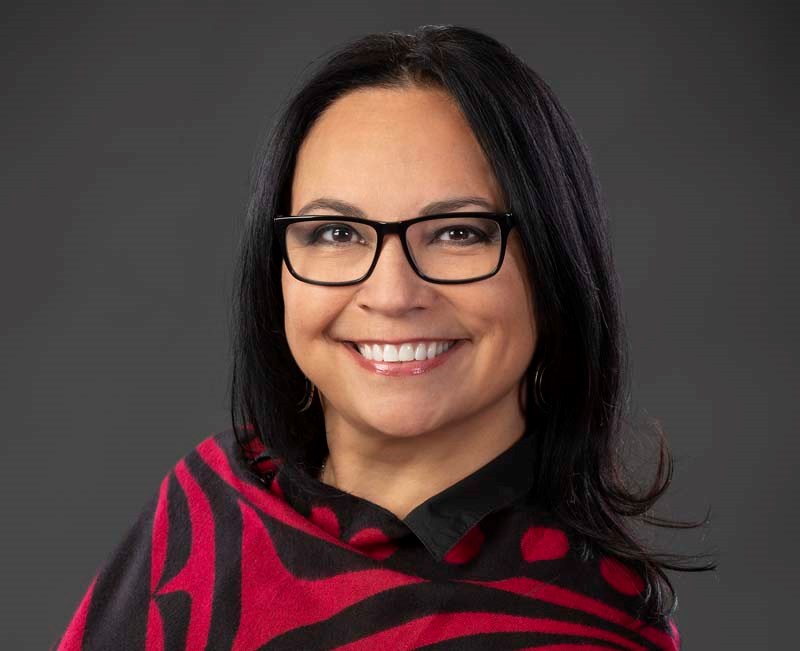The province announced last week that it's changing provincial legislation to remove barriers for Indigenous peoples exercising jurisdiction over child and family services.
Mary Teegee, executive director of child and family services at Carrier Sekani Family Services (CSFS), says these amendments are a step in the right direction, but Indigenous advocates have been asking for changes to the Child, Family and Community Service Act (CFCSA) for the past 20 years.
B.C. is now the first province in Canada to recognize this right within provincial legislation and align with federal bill C-92, which allows nations to develop their own child and family services laws.
“What the bill is intended to do is to allow Indigenous people to make their decisions for their children and families,” explains Teegee.
Currently, Indigenous children are disproportionately over-represented in B.C.'s child and family services system, comprising 10 per cent of the general population yet representing 68 per cent of the children in provincial care.
The changes will respect the inherent rights of Indigenous communities to provide their own child and family services, and to keep Indigenous children safely connected to their cultures and their communities.
The changes will also help to further address and reduce the disproportionate number of Indigenous children in provincial care as the modernized legislation will support Indigenous peoples to re-establish, develop and exercise child-welfare laws for their community members and to recreate their own models for child and family service delivery, including family support, child protection and adoption services.
Teegee, who is also the chair of the Indigenous Family Services Directors Forum, an organization comprised of 24 Indigenous agencies that provide child and family services through the delegation of the CFCSA, says while the changes are welcome, there are some shortcomings.
“I’m hoping that the ministry really listens to what Indigenous leaders are saying,” said Teegee, adding that the principal of substantive equality needs to be front and centre – which is the idea that unequal opportunities make it more difficult for some to be successful.
“Substantive equality is basically the principle that every child has the right to live up to their full potential and there ought to be the funding to get to that level and that just isn't the case,” said Teegee, noting there are funding inequities between Indigenous and non-Indigenous children.
“We have had the inherent right to take care of our children, but we haven’t had the resources to breathe life into our own laws. For example, we can make the decision to say this is what this family needs, or the child needs, or the parents need to keep the child, but we haven't had necessarily the resources to enact those plans.”
Teegee says the principle of substantive equality needs to be strengthened to ensure that the culturally-based safety and well-being of children is at the front and centre.
The province says upholding Indigenous jurisdiction will have an unparalleled positive impact on Indigenous children, youth and families, respecting and facilitating connections to communities, and resulting in healthier lifelong outcomes.
“Well, I've always said that in order to know what the solutions are, you need to really, really know what the issues are and the challenges. Who better knows what the issues and the challenges and issues are, but people from the community, and the Indigenous agencies who have been working with the community,” added Teegee.
She said jurisdiction in its simplest form is the ability to make decisions and the best people to make decisions for a child are the people who a living and in and helping the community, rather than someone in an office in Victoria.
“It makes sense that it would be the families and Indigenous community to be able to make those decisions and so that would lend itself to better outcomes for children that they wouldn't be removed from their communities.”
Teegee says she recognizes this is a first phase, but with the existing amendments, she hopes there is an opportunity to strengthen the language regarding substantive equality, self-determination, and the culturally appropriate safety and well-being of children.
“I’m hoping that there's going to be really in-depth consultation and we're definitely going to be involved in that,” added Teegee.
She also noted that as the amendments are needed to ensure that provincial and Indigenous child and family service systems are in alignment with federal legislation, it will make for an easier transition.
“It won't be as challenging when we are developing our own laws. It will help us transition to when we are under our own children’s child and family laws,” said Teegee.



